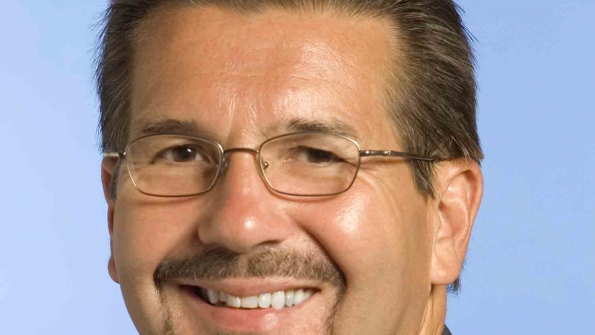How to avoid FCC penalties now that the narrowbanding deadline has passed
By Al Ittner
In an effort topromote more efficient use of spectrum, the Federal Communications Commission (FCC) mandated that all two-way radio licensees operating in the VHF (150-174 MHz) and UHF (421-470MHz) radio frequency bands switch their systems from 25 kHz efficiency channels to 12.5 kHz efficiency channels earlier this year.
Licensees must now only operate their radios with 12.5 kHz channel width. If you bought your radios during the last decade, you very likely have a dual-mode radio that is capable of 25 kHz and 12.5 kHz operation. If this is the case, the licensee is responsible for ensuring that the 25 kHz operation is disabled, which typically can be done via software on the device. If the licensee’s radios are older, then they may be capable of only 25 kHz operation and must be replaced. Failure to do so means that the FCC’s enforcement bureau can cancel your license or impose fines of up to $16,000 per occurrence or per day (up to $112,500 for any single failure to act).
Now that the deadline has passed, what should you do if you are not sure whether your two-way radio systems are in compliance? Of course, the first step is to check with your communications manager to ensure that they are aware of this FCC narrowbanding requirement and have implemented 12.5 kHz operation. If you have not yet completed your VHF/UHF systems conversion, then the following steps must be taken immediately to advise the FCC that you are still in the process of completing this conversion.
1. Verify that you have submitted a license modification application to the FCC to include 12.5 kHz or better emission designator on your current 25 kHz license. You may submit modification applications directly to the FCC, if your system simply involves a software change from 25 kHz analog to 12.5 kHz analog operation. If your system modification involves an upgrade to a digital system or other modification of the system, this will require coordination with other licensees in your area of operation. Contact your FCC-certified frequency coordinator to conduct such coordination and submit the modified license application. Also, the FCC found that some licensees already have converted their systems to 12.5 kHz operation but failed to modify their 25 kHz-only licenses. In upcoming audits by the FCC enforcement bureau, it will first look at those licensees that are only licensed for 25 kHz operation. So, make sure that you are properly licensed for narrowband operation. But remember, it’s not enough just to modify your license; you must also actually convert your system and be operating in at least 12.5 kHz efficiency.
2. Complete and file a waiver request with the FCC to request authorization to temporarily continue operating at 25 kHz beyond the Jan. 1, 2013 deadline. Though the FCC requested that such waiver requests be filed long before this deadline, it has not yet cut off any further submittals of these requests. The FCC set a high bar for granting such waiver requests, requiring—among other things—detailed information about your narrowbanding progress to date and your milestone timeline for completing the conversion. It also warned that later-filed waiver requests will be granted for shorter extension times than requests that were filed eariler. Visit www.fcc.gov/narrowbanding for further information and FCC completion guidelines.
What happens if you just decide to ignore all of the above and take your chances while continuing to operate your system out of compliance? FCC officials have stated publicly that they will turn over all licenses that are only licensed for 25 kHz operation to the FCC enforcement bureau after the start of this year.
The enforcement bureau is expected to conduct an audit to verify with the 25 kHz-only licensees that their systems are still in operation and whether they are operating with 12.5 kHz efficiency. If you have not implemented 12.5 kHz channels and do not have an approved FCC waiver, chances are good that your license will get revoked or that you will face a potentially hefty monetary fine until you comply, as noted at the top of this article.
There are other problems that licensees of remaining non-compliant 25 kHz systems will face, including:
· The FCC rules currently prohibit radio manufacturers from manufacturing or importing radios capable of 25 kHz operation after Jan. 1, 2013. The FCC has been petitioned to allow for 25 kHz-capable radios to be manufactured/imported for sale to waiver recipients. However, at this time, the FCC has not yet responded to the petition. Unless the FCC acts favorably on that petition and you have requested and received a waiver from the FCC, it is unlikely that you be able to find a supply of 25 kHz radios for much longer, if you need more of them.
· The FCC agreed with the Land Mobile Communications Council, which includes every FCC- certified frequency coordinator, that effective Feb. 1, 2013, frequency coordinators are treating incumbent non-compliant 25 kHz systems as if they had narrowbanded their systems to operate on 12.5 kHz channels. This means that additional frequency assignments for new systems in your operating area likely will interfere with your 25 kHz system until you narrowband your non-compliant system—and, as a result, the enforcement bureau likely will get involved to ensure your compliance.
The bottom line: Make sure you file a license modification application and a waiver request with the FCC, if your VHF or UHF radio system is still not in compliance.
Al Ittner is senior manager of spectrum and regulatory strategy for Motorola Solutions.















